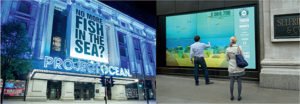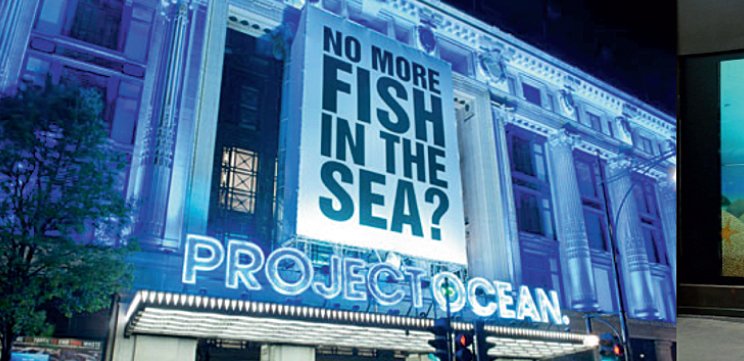
Simon Tebbutt
Founder, owner and Head of Shopper Experience
Ninth Wave, a specialist retail marketing consultancy, is a new venture for Simon following his four-year stint at ApolloNation, where he was Head of Shopper and Retail Strategy Australia and New Zealand across four offices.
He worked in the UK at Marks & Spencer and Sainsbury’s and ran the Safeway account within the WPP Group. In 2004, he moved to Australia, leading the account team for both ALDI (at BMF) and Woolworths (at M&C Saatchi) – covering all disciplines. When working at M&C Saatchi, Simon created ‘Earn & Learn’, a collector scheme for Woolworths and schools.
Simon recently presented at both Mumbrella and POPAI retail summits on ‘The Art of Retail Engagement’, which is the inspiration for this article.
European stores provide food for thought with shopper engagement through simply telling a story and connecting emotionally.
On a recent visit to the UK, I discovered some great examples of engagement in retail: breathtaking windows and displays, changing shopping dynamics and channels, and some rather quaint and old-fashioned concepts.
What struck me most was the paradox between ‘quick’ and ‘slow’. In a world that demands and caters for immediacy, technology and digital connection, it was the ‘low-tech’ activations and ideas that seemed to be connecting with real resonance in retail.
While accessibility and purchase need immediacy, it seems that retailers are increasingly looking to storytelling to engage, but often through trends in topicality beyond the product specification, price and performance. Specifically, there were real and committed examples in the UK of retailers using sustainability and provenance to engage shoppers within the store and on products.
When it comes to sustainability, with at least half a dozen decent UK supermarket brands, differentiation is often hard to achieve.
Tesco, however, has implemented an aggressive policy in tackling climate change, including ‘Energy Champions’ in each store – monitoring energy use, completing energy audits and providing staff with energy-awareness information – and introducing several new eco-stores, built from more environmentally friendly materials. At the same time, the retailer has invested in new warehouses powered through a very visual increase in wind turbines.
My visit to a relatively new Tesco, in Leicester, was visibly different, with natural light through the roof and wooden beams and displays everywhere: contemporary, natural and eco-friendly while having a calming effect.
Sustainability may not be the main criteria for selecting a product, but there is something quite cleansing about its purpose. It moves the decision away from price to ‘Do I agree with this?’ – and it feels difficult to argue that a sustainable approach is anything but positive.
Since Harry Selfridge opened his West End ‘retail theatre’ in London in the early 1900s, Selfridges has built and retained a reputation for its displays. Its take on marine-life sustainability through ‘Project Ocean’, launched last year, is explosive, with stunning displays. The store is demonstrating its commitment and confronting the issue head-on, even providing an interactive window display that allows customers to donate to the project.

The shopper in Selfridges is left in no doubt about the theme and purpose of the displays, which have edge and style, but, above all, show total commitment and are totally convincing.
Provenance and heritage are nothing new. Indeed, the new Coles store at Coburg in outer Melbourne is a great example of this.
In the UK, though, Marks & Spencer has embraced these elements with relish. M&S has long established itself as brand of high quality, but unashamedly premium prices. The value equation is too often associated with low pricing – here it is not cheap, but boy is it good. What M&S has done so well is taken the provenance story and mixed it with seduction.
Behind the check-outs are large displays showing rustic yet genuine images of the people who farm or create the products for the store. Cleverly, these elevate the status of suppliers to farmers – to people, not a processing plant. Mix this with some large and seductive copy lines and the package is both complete and compelling. Importantly, this takes the message away from price.
I’m not suggesting that provenance is a distraction … or maybe I am. Either way, there is a feeling that both the retailer and the shopper have a win – the retailer maintains margins as the shopper is happy to pay for the love and care afforded by the farmers.
This approach has been replicated at Coles at Coburg, where the store’s greater proportion of fresh food is supported by its ‘So fresh’ assault.
The scale of exposure given to provenance in some UK stores, though – across M&S, Sainsbury’s, Selfridges and Whole Foods Market – seems to take the theme to another level. At Selfridges, customers are invited to ‘Meet the Makers’.

The engagement here works either through a story of how and where the product originates, or in chats with the staff at the counter, who are making food and other delicacies on the premises. Here, they will take you through the ingredients and processes.
Bread, along with milk, has been highly commoditised – through the $1 loaf, for example, and high-density merchandising. It’s a discounted-volume, not a lower-volume, category.
In a clever twist of provenance, however, I saw a great example in Tesco at Brooklands in Surrey where the bakery area has been converted to ‘The Bakery Project’.
This is clever on several counts. Yes, you can buy your standard sliced loaf, but here Tesco has placed real value on craft and ingredients – making bread more interesting from both history and taste perspectives.
I would love to have been a fly on the wall when the suggestion was made to display low volumes of product on sparse displays – where takings per sqm will drop significantly, through margins will, of course, increase. This is the classic volume-versus-value equation that all retailers are trying to crack.
The question that I pondered when in the store was: what’s driving this? Is it the ‘new healthy nation’, the ‘low-carb people’? Or is it the obsession with discovering new, but also historic ingredients, such as spelt, ancient grains and quinoa? Being cynical, I wonder whether it’s about creating a product with better margins and to increase volume spend in the bakery. I reckon it’s probably a combination of all of these.
By calling it a ‘project’, Tesco is probably hedging its bets. Irrespective, innovation breeds interest, engagement and trial through compellingly combining a contemporary look and feel with history, craft and human care of one of the world’s oldest products.
In Whole Foods Market, numerous products, including juices, coffee, sauces and chips, are made from scratch on the premises – each section declaring that they are ‘Made right here’. The tortilla-chips display includes the message ‘Made by Kristina’ – the team member who has, apparently lovingly, created the chips.
These stories ease the shopper into a genuine engagement that, in turn, creates an image in the mind of passion and care from real people – not one of being processed in a factory. It also builds value and makes price less of an issue. You just have to buy!
Whole Foods Market, in particular, is also strongly ‘vocal’ in-store regarding its policy with suppliers – talking up its ‘Win, win’ relationships while shifting the attention and creating a mood reflecting positive collaboration where ‘everyone is happy’.
While the negotiations and financial reality of the supplier- Whole Foods relationships will undoubtedly be contested, the shopper in-store is given a feeling of calming reassurance that the business operation is both mutually beneficial and cordial. It’s crazy, but it does produce a feel-good factor.
Provenance allows brands to build unique stories of people and tradition – of cooking techniques that have been passed down by generation. However, some of the best examples are stunningly simple.
Consider Intermarche in France – a large supermarket brand that prides itself on fresh food. Like plenty of fresh-food brands, it sells orange juice, which, many will agree, is a product best sold with as little interference as possible: basically, squeeze the oranges and bottle the juice.
In theory, there is little differentiation between oranges squeezed in Coles and Woolworths, but the way they are squeezed and merchandised in Intermarche is indeed unique.
What differentiates Intermarche orange juice is that the exact time that the oranges were squeezed is also the name of the product on the bottle – so the 8.54am juice was squeezed and bottled at 8.54am, the 8.55am juice at 8.55am, and so on. This is really clever marketing of a product that has probably been around for as long as bread.
So engagement, for me, is simple. If a product, display, story or policy makes me smile and think, then it starts to engage.
Provenance and heritage also work well. Food perception shifts from the product being ‘processed’ to it being ‘crafted’. Bizarrely, knowing where something has come from, or who has made it, somehow seems to make it taste better. Craft beers have enjoyed much success with this theory.
Finally, my favourite engagement example – in many ways similar to the Intermarche orange juice one – is simple and immediate, with no story as such. It’s a clever application of neuroscience: a product built from some great insight about people’s ‘everyday’ psyche.
Days of the week have rarely been analysed as individual ‘brands’, but if you were to explain the social and emotional meaning of each day, different interpretations will occur to different people. I would, however, argue that of all the days, Friday holds the most positive of emotional connections – the end of the working week for most in the Western world and the beginning of free time: TGIF!
So … ‘I’ll have a Friday, please’. This is from Whole Foods Market, which has no other labelling copy other than ‘Friday’. It works so much better than
‘I’ll have a Wednesday’ – even if Wednesday is on discount. Brilliant and so simple.
Contemporary shopping demands rapid access to information, along with reassurance, comparison and instant purchase, but you can’t beat a good old story or emotional connection to truly elevate a product above its price to a position of real value and even love.






